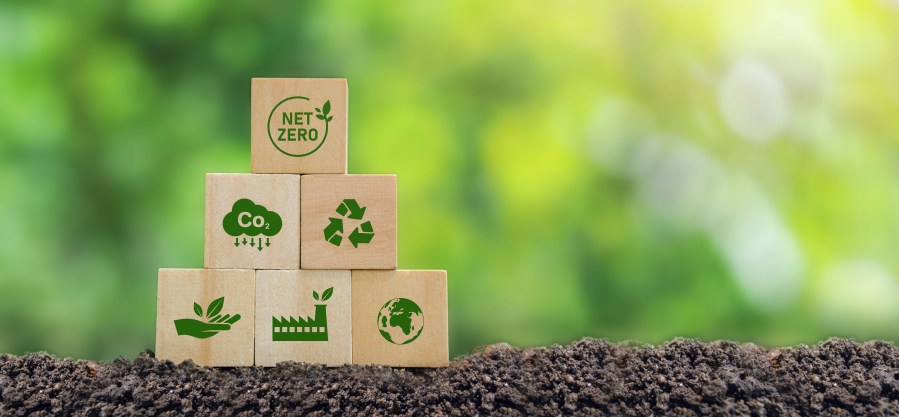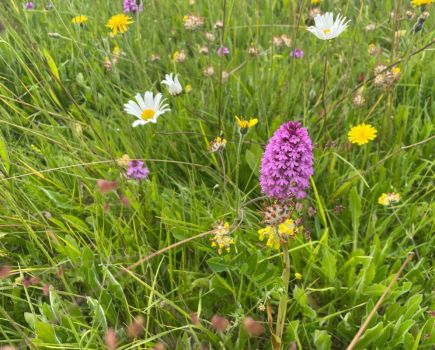For some, the mere mention of carbon trading elicits confusion, while for others it’s optimism. CPM attended an industry roundtable, hosted by Soil Capital, to confront the concerns about what could be seen as a most modern of fairy tales.
“It came down to a matter of use it or lose it.”
By Melanie Jenkins
The subject has been batted around for a while now, but is the industry any closer to definitively trading farm-stored carbon at a uniform and fair level? Many also doubt that farmers could confidently say that they know what carbon trading is and understand it.
The general consensus among the industry figures present at Soil Carbon’s ‘myth busting’ session hosted at Randall Farms in Berkshire last year, was ‘no’. But united, it’s something that they’d like to change.
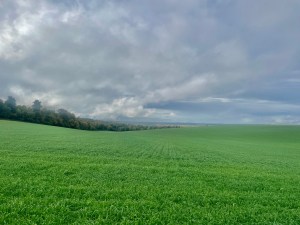
There’s an opportunity for British growers in storing carbon, in the region of £500M per year.
“There’s an opportunity for British growers in storing carbon in the region of around £500M per year,” says Soil Capital’s Andrew Voysey. “It’s timely to look at the financial opportunities, plus this money can be made available to transition to farming practices which have other merits as well.”
Soil Capital has its origins in Belgium, and now operates there, in France and in the UK. “But the information gaps that exist in the UK compared with France are stark and are holding farmers back,” believes Andrew.
The Soil Carbon Code is aiming to help standardise the industry in the UK, but Andrew reckons there are fundamental ‘myths’ about how the carbon market works that result in information gaps which still need plugging.

Industry representatives all voiced very different attitudes towards the carbon trading market.
To highlight just how varied the attitudes and feelings are among the industry, each representative at the roundtable was asked to use one word to express their feelings towards the carbon markets in the UK. Some of these included: sceptical, excited, curious, unsure, undecided, intrigued, dubious, potential, opportunity, cautious, reluctant, defensive, and misunderstood.
“There are plenty of reasons to be cautious about the carbon market, but I’ll be the first to say that there’s opportunity too,” claims Andrew.
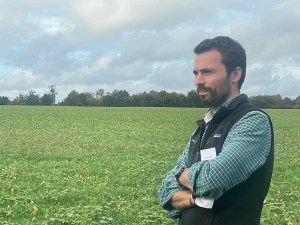
Andrew Voysey believes there’s plenty that the industry doesn’t know yet, but it knows enough to be doing something credible and substantive.
Soil Capital started out 10 years ago as an agronomy company. Its founders – an agronomist and financial expert – came together over the shared understanding that farming improves soil health should also increase profitability. “Three years ago the founders pivoted to unlock carbon payments for farmers, believing they should be supported to bring together the environmental and economic agendas,” he explains.
Today, the firm has 600 farmers enrolled in its carbon payment business across its three operational countries, and some of these have just been the recipients of the first round of payments, totalling around €1M (£866,000) between them.
But Andrew admits there are still bridges that need to be crossed. “There’s plenty that we don’t know and aren’t doing perfectly. But we do know enough to be doing something credible and substantive.”
So what were the key concerns raised about the carbon markets?
If I trade all my carbon now, I may regret it if I need it in the future.
For host farmer Andrew Randall, this was something that was very much on his mind when he started his due diligence before getting involved with carbon trading. “By nature, I’m very cautious and wouldn’t call myself a pioneer. But it quickly became apparent that there was a way of going about it that wasn’t going to be an issue.
“All we’re doing as a business is selling the benefits from our practices up to the field gate each year. Rather than being just about the build-up of carbon, it’s about capitalising on the benefits of not disturbing the soil, optimising nitrogen use, and growing cover crops,” he explains. “It came down to a matter of use it or lose it – if I didn’t claim this year then the opportunity would be gone, so I felt the time was right.”
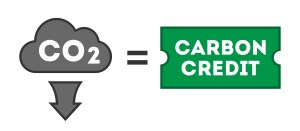
Carbon markets are paying for the improvements made each year – be that through reduced emissions or sequestered carbon.
A fundamental driver for Andrew Randall was that he felt, as a farmer, he wasn’t solely a food producer anymore. “We’re running a very commercial, rural business and we’re looking to optimise every process and asset we have. And with the demise of basic farm payments, we wanted to recoup those losses, as well as being mindful of engaging with modern opportunities.”
The key aspect, according to Andrew Voysey, is that no one is mining or buying carbon locked up in soils before farmers enroll in a carbon payment programme. “People think they’re selling access to what’s already locked up, but what the carbon markets are paying for is the improvements made each year – be that through reduced emissions or sequestered carbon. To the best of my knowledge, no carbon payment scheme is paying for the maintenance of what’s already in the soil.”
Antony Pearce has also entered the carbon market on his farm and was terrified to start with as he didn’t want future liability. “I was already a regenerative agriculture practitioner and I wanted to understand whether I was selling historical improvements or not.”
At present, the selling of historical improvements in soil carbon is not practiced in the UK, and the US is the only country where this happens as far as Andrew Voysey is aware of.
A concern voiced by Matt Culley of the NFU was that there are no regulatory limits yet. “It’s easy to step back and just let things develop until you get a clear perspective, but this is where we [the industry] should evolve the conversation.”

For Andrew Randall, selling carbon credits is also about capitalising on the benefits of not disturbing the soil.
Andrew Voysey points out that the French regulatory framework is far more defined than ours. “The French government has a clear view of the legitimacy of this market, which sends a signal to growers and the industry that all they have to decide is whether it’s for them, making it less risky.
“In the UK, the official line is more that they seem happy to see farmers take up private sector schemes so long as these work within public sector scheme rules,” he explains. “We’re in an unregulated space and a voluntary market, so there are various values attributed to different practices, making it a confusing space.”
There’s also discussion that if farmers wait, technology could be developed which takes the opportunity from their hands, he adds. “There may be technological solutions that come along in 10 years that make a drastic difference to climate change, and those farmers who held back might miss out.”
If I trade carbon, I’m just giving the big emitters the right to pollute.
The confusion regarding this statement, according to Susan Twining of the CLA, is down to the language used. The CLA has been doing a lot of work to create a guidance note for its members to help them understand the concept and language around carbon trading, she says.
“The main area for distinction is between trading offsets – where carbon stores can be used by another company as part of its net zero calculation – and selling insets. Here, there’s a completely different agreement in place to help improve your own soil carbon and the certificate is verification of that achievement which can be used by the supply chain,” she explains.
“We must ensure that the language about these two aspects is very clear as it’ll go a long way to help people understand the soil carbon market. The distinction between offsetting and insetting, an agreement with the supply chain, is very important to know.”
Andrew Voysey agrees that the insetting aspect is far less well understood. In this, the carbon improvement is paid for by the same company that is buying the crops. The carbon footprint of crop production is part of the footprint of the buyer, so what the farmer reduces therefore decreases it across the entire supply chain.
“The role Soil Capital plays is intermediating this system, linking the farmer with the supply chain, helping the farmer identify areas for improvement, and verifying through a strict protocol the impact of any changes the farmer makes,” he adds. “And where it’s the commodity markets and there’s no traceability in the supply chain, there are mechanisms in place to draw a link between the area where the crop is produced and bought from.”
Another concern, voiced by Sarah Baker of AHDB, is that the benefits generated by farmers aren’t just being handed over to the supply chain. “Our major concern is that the buyers of carbon for offsetting know a lot more than farmers, and that farmers aren’t fully informed about the value, income stream or the direction of price, and are therefore ripe for exploitation, unless the asymmetry of information in the industry is addressed.”
If I trade all my carbon now, I won’t be able to meet net zero requirements in the future.
According to Andrew Voysey, there’s a perception that once soils reach their capacity for carbon that can be sequestered, and if growers have sold all of this, they won’t be able to prove their own net zero performance. “This is the case when carbon is sold for offsets, but with insetting, the claim of carbon improvements is made by both the famer and supply chain, meaning both are aligned in demonstrating progress towards net zero.”
Emily Norton of Savills asks how many years can farmers be paid to add something to the system? She points out that if farmers could trade all of their carbon potential in the next five to 10 years, this might leave them in a difficult, and as yet unknown, situation in the future.
I have to get to net zero before I can get paid for carbon.
Farmers are both emitting and storing carbon simultaneously, says Andrew Voysey. “Most farms today are net emitters. So there’s a challenge and an opportunity to transition from that starting point.
“The simple answer from the market’s point of view is ‘no’, farmers don’t need to be net zero before trading. But a farmer’s moral point of view might be different.
“The voluntary carbon markets pay for emissions reductions and carbon sequestration, and it has been comfortable paying farmers to reduce emissions as they work towards and surpass net zero.”
And farmers should also be aware that a single management decision could impact both their emissions and sequestration, highlights Andrew Voysey. For instance, reducing the intensity of cultivations will result in both lower emissions from fuel usage and more carbon being sequestered in soils through less soil disturbance.
And Matt questions whether, as schemes develop, carbon emissions and sequestrations could be counted separately but not necessarily paid for separately.
Carbon prices will only rise, so it’s in my best interest to wait until I value my carbon.
Antony points out that the opposite concern could be the case. “There’s a question concerning whether the price of older carbon credits will drop in the future as standards and technologies continue to evolve – so should I sell them all now? From my perspective, you’re being paid for your efforts this year. This is unlike in the US, where you can trade back 10 years. So if you want to be rewarded for your efforts, you need to trade it on the basis of ‘now’.”
According to Andrew Voysey, one of the most important things is that, at some point, soil will reach carbon saturation, so farmers won’t be able to meet market requirements to show that they’re making additional improvements. “So if you’re changing your practices for reasons other than carbon trading, there’s a possibility this will take you beyond the point of having anything left to trade into the current markets.”
One of the key issues for Emily is how carbon markets are talked about. “We spend too much time talking about what carbon markets want to achieve and not what farmers want to achieve. By understanding individual business motivations, we can see where they want to go and then how to get there through investment. We have to frame how farmers are participating in schemes better, rather than talking about what’s being done to them; to demonstrate how and why it’s good for their business and show that they have the power.”

Farmers aren’t here to solve climate change, but they can help and try to capitalise on carbon markets while they do.
Farmers aren’t here to solve climate change, notes Andrew Voysey. “The more carbon we remove from the atmosphere, while reducing emissions, the more we can potentially help, but it’s no silver bullet. And agricultural transition has plenty other benefits for farmers and farming.”
This article was taken from the latest issue of CPM. For more articles like this, subscribe here.

